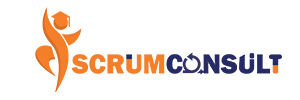Introduction
[4:22 AM, 04/07/2024] Edu Akpan: Topic: What Product Owner is
A Product Owner is a key role in Agile and Scrum methodologies, responsible for maximizing the value of the product resulting from the work of the development team. They act as the liaison between stakeholders (including customers, business leaders, and other team members) and the development team, ensuring that the team is working on the highest priority tasks that deliver the most value.
Key Responsibilities of a Product Owner:
1. Defining the Product Vision and Strategy:
– Clearly articulating the product vision and ensuring it aligns with business goals.
– Communicating the vision to the development team and stakeholders.
2. Managing the Product Backlog:
– Creating, maintaining, and prioritizing the product b…
Difference between Product Management and Product Owner
Product Management and the role of a Product Owner are closely related but differ in scope, focus, and responsibilities. Here’s a breakdown of the key differences between them:
Scope and Focus:
*Product Management:*
– *Broad Scope:* Encompasses the entire lifecycle of a product from conception to retirement.
– *Strategic Focus:* Involves long-term planning, market analysis, product vision, and overall strategy.
– *Market and Customer Orientation:* Focuses on understanding market needs, customer problems, competitive landscape, and aligning the product with business goals.
– *Cross-functional Interaction:* Interacts with various departments including marketing, sales, finance, and customer support.
*Product Owner:*
– *Narrow Scope:* Primarily focuses on the development and delivery phase within an Agile or Scrum framework.
– *Tactical Focus:* Involves detailed planning, backlog management, and ensuring the development team delivers value in each sprint.
– *Team Orientation:* Acts as the liaison between stakeholders and the development team, ensuring the team understands and works on the highest priority items.
– *Development Team Interaction:* Works closely with the development team on a daily basis to clarify requirements, prioritize work, and accept completed tasks.
### Key Responsibilities:
Product Management:
– Product Vision and Strategy: Defines and communicates the long-term vision and strategy for the product.
-Market Research: Conducts market research, competitive analysis, and customer interviews.
– Roadmap Planning: Develops and maintains the product roadmap, aligning it with business goals and market opportunities.
– Stakeholder Management: Engages with various stakeholders to ensure the product aligns with overall business strategy.
– Lifecycle Management: Manages the product through its entire lifecycle, including launch, growth, maturity, and decline.
Product Owner:
– Product Backlog Management: Creates, prioritizes, and maintains the product backlog.
– *User Stories and Requirements:* Writes detailed user stories and acceptance criteria for the development team.
– Sprint Planning and Review: Participates in sprint planning, daily stand-ups, sprint reviews, and retrospectives.
– Stakeholder Communication: Gathers feedback from stakeholders and customers to inform backlog priorities.
– Acceptance Testing: Reviews and accepts the completed work to ensure it meets the defined criteria.
Interaction and Collaboration:
Product Management:
-Higher-Level Stakeholder Interaction:* Engages with senior management, marketing, sales, and other high-level stakeholders.
– Cross-Department Collaboration: Works with various departments to align the product with business strategy and market needs.
Product Owner:
– Day-to-Day Team Interaction: Works closely with the development team on a daily basis.
– Focused Stakeholder Interaction: Communicates with stakeholders to gather requirements and provide updates on development progress.
Decision-Making:
Product Management:
-Strategic Decisions: Makes high-level strategic decisions about the product’s direction, market positioning, and long-term goals.
– Investment Decisions: May be involved in decisions regarding product investment and resource allocation.
Product Owner:
– Tactical Decisions: Makes day-to-day decisions about the prioritization of work and detailed requirements.
– Sprint-Level Decisions: Determines the content and priorities for each sprint based on stakeholder input and team capacity.
Summary:
Product Management is a broader role focused on the overall strategy, market positioning, and lifecycle of the product.
Product Owner is a more focused role within the Agile framework, dealing with the day-to-day execution of the product development process and ensuring the development team delivers value efficiently.
Both roles are essential for the successful development and management of a product, often working closely together to ensure alignment between strategic goals and tactical execution.
To learn more about Scrum Master Certification in Lagos, Agile Expert, Project Management, Product Owner, Lean Six-sigma Green belt, Lean Six-sigma Black belts, SMC, PSM and CSM, kindly visit scrumconsult.com

